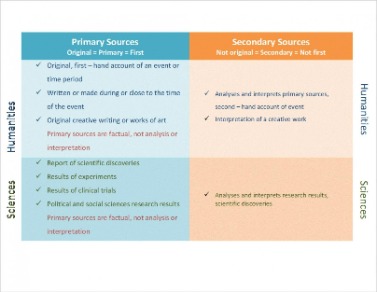

Do not make the mistake of filling the chart with all types of pivot points because you will not understand anything. The R3 and S3 are the best levels to enter the market on a countertrend order when the price goes to touch them. The target could be a huge drop down to the PP level, but traders should always take into account the use of a divisible position to take a first profit on the R2 and S2 levels. If the price action stalls and bounces back before reaching the pivot level, you can capitalize on this movement by entering a trade per the direction of the bounce. When the security is testing a pivot line from the upper side and bounces upwards – that is your cue to enter a long trade. Conversely, if the price is testing a pivot line from the lower side and bounces downwards, you ought to short the security.
While at times it appears that the levels are very good at predicting price movement, there are also times when the levels appear to have no impact at all. Like any technical tool, profits won’t likely come from relying on one indicator exclusively. While knowing how to calculate pivot points is important for understanding what you’re using, most charting platforms calculate pivot points for us. Simply add the pivot-point indicators to your chart and choose the settings you prefer. The supports and resistances can then be calculated in the same manner as the five-point system, except with the use of the modified pivot point. Here we go over how to calculate pivot point levels and use them in practice.
McGinley Dynamic Indicator: Full Guide
It is a tool used by both experienced and novice traders to maximize their potential profits. Still, it is important to understand the risks and benefits of this type of trading because it’s essential for making informed investment decisions. CFD trading is a popular way to invest in financial markets, offering flexibility and the ability to enter trades without owning the underlying asset. But how can one effectively trade CFDs across various financial assets such as stocks, currency pairs, indices, commodities, and more?
Not only can investors use pivot points to determine support and resistance levels, but also breakouts. When the asset price fails to stay within the levels and breaks through the pivot line, this movement is known as pivot point breakout. These indicators can be added to a chart, and the levels will be calculated and shown automatically. If you want to calculate them yourself, keep in mind that pivot points are used predominantly by day traders and depend on the high, low, and close from the previous trading day.
When the market approaches a support level, many traders will enter long positions , anticipating a price increase. Support is a term used in technical analysis to describe a price level where buying pressure tends to be stronger than selling pressure. In other words, when the price of an asset reaches a support level, there’s a higher likelihood that it will bounce back up. This happens because, at this price point, more traders are interested in buying the asset than selling it. To start a pivot point breakout trade, you have to begin a position using a stop-limit order when the stock price breakout the pivot point level.
It takes the previous day’s high, low and close prices to predict probable support and resistance levels. Although pivot trading is primarily applied on the daily time frame, pivots can also be calculated for much shorter time frames, such as the hourly or 15-minute charts. Pivot points refer to technical indicators used by day traders to identify potential support and resistance price levels in a securities market.
When an asset is traded over the pivot point, it’s a sign of bullish market sentiment. Conversely, when the asset is traded below the pivot point, the market is believed to show a downtrend movement. The set support and resistance points are needed after traders have determined the price direction. The concepts behind pivot points can be used across different timeframes, even though they were originally made for floor traders. Even though they can be applied to nearly any trading instrument, pivot points have proved exceptionally useful in the forex market, especially when trading currency pairs. Support and resistance levels, pivot points, and the CCI indicator are essential tools that can help you navigate the complex world of trading.

Pivot Points for 1-, 5-, 10- and 15-minute charts use the prior day’s high, low and close. In other words, Pivot Points for today’s intraday charts would be based solely on yesterday’s high, low and close. Once Pivot Points are set, they do not change and remain in play throughout the day. What are Forex Pivot Points and How to Trade Themarticle, with 3 pivot point trading strategies widely used by professional traders and how they can be successfully traded. The R2 and S2 are much stronger levels that are not always reached and not always exceeded. These levels only get reached in the presence of a good directional trend and can become levels for countertrend orders, with a target towards the PP level.
Pivot point breakout strategy
Like in the previous type, first, https://traderoom.info/ necessary to find the value of P by summing the previous day’s high, low, and close prices and dividing this number by 3. However, the formulas for support and resistance levels are different. Support and resistance levels based on Pivot Points can be used just like traditional support and resistance levels. The key is to watch price action closely when these levels come into play.

When a market is trending, the Pivot Point levels are good places to wait for buying opportunities. EMAs are calculated to give higher weight to recent prices, while SMAs give the same weight to all prices. Or similar to exponential moving averages , compared to simple moving averages . Another difference is that there’s more weight on the close price than on the high and low prices. Pivot points are a type of predictive indicator, meaning that they have a forward-looking ability. However, it’s important to keep in mind that not all of the predictions may come true.
Fibonacci
The platforms automatically calculate support and resistance levels, so the trader doesn’t have to do it manually. After getting the pivot levels, the trader can concentrate on figuring out their approach to the market for the day. Originally, pivot points were developed by floor traders who worked in a fast-moving environment in the equity and commodities markets. At the start of each trading day, they would use the previous day’s high, low, and close prices to calculate the pivot for the current trading day. Pivot Points were originally used by floor traders to set key levels.
- These support and resistance levels give you a broader view of the market, allowing you to make informed decisions when entering or exiting trades.
- The information provided by StockCharts.com, Inc. is not investment advice.
- It is the same as woodie’s formula; they use the previous day’s close price and central pivot range to calculate the levels.
- The Pivots do not change until the week ends and new ones can be calculated.
- Pivot points are widely popular for day trading, mostly because they can be efficiently implemented over different time frames, be it 1 second, 1 minute, or 1 hour.
Select your « Time Interval » and « Symbol » and Pivot Points will automatically be calculated below. You can also switch to « Manual » mode if you’d like to input your own OHLC prices. Remember, one of the advantages of using pivot points is that it is objective, so it’s very easy to test how prices react to them. Keep in mind that some forex charting software plots intermediate levels or mid-point levels. Learn how to trade forex in a fun and easy-to-understand format.
What is Volume in the stock market? How to use volume while trading?
We recommend that you seek independent advice and ensure you fully understand the risks involved before trading. You may want to test the environment with virtual money with a Demo account. If you see that price breaks the support, you can start selling the pair.
Combining pivot points with other trend indicators is common practice with traders. A pivot point that also overlaps or converges with a 50-period or 200-period moving average , or Fibonacci extension level, becomes a stronger support/resistance level. Once having calculated the value of P, it’s possible to find two support levels and two resistance levels.
Uses of Pivot Points
Unlike the previous methods, Nick Scott developed the Camarilla mathematical levels with 9 pivot points. In the Camarilla formula, only the pivot point calculation is identical to the others methods. Pivot points are most widely used by day traders though they can also offer valuable insight for swing traders and long-term investors.
Book review of I Saw Death Coming: A History of Terror and Survival … – The Washington Post
Book review of I Saw Death Coming: A History of Terror and Survival ….
Posted: Wed, 25 Jan 2023 08:00:00 GMT [source]
Pivots from higher time frames tend to be stronger than pivots from lower time frames. Aggressive traders will play them when the price touches a pivot point. If you are a conservative trader, you wait for the price to break and retest the level to enter.
Price Pivots Circle Big Profits – Technical Analysis – Investopedia
Price Pivots Circle Big Profits – Technical Analysis.
Posted: Sat, 25 Mar 2017 18:42:54 GMT [source]
Use our hourly, how to calculate pivot points, weekly and monthly pivot points to determine market sentiment in forex and other key assets. A structural pivot is a technical analysis price indicator used to identify a change in the market’s direction due to structural forces, not cyclical. The pivot point can then be used to calculate estimated support and resistance for the current trading day. Swing traders mostly use pivot points based on weekly data, while position traders choose the monthly data.











